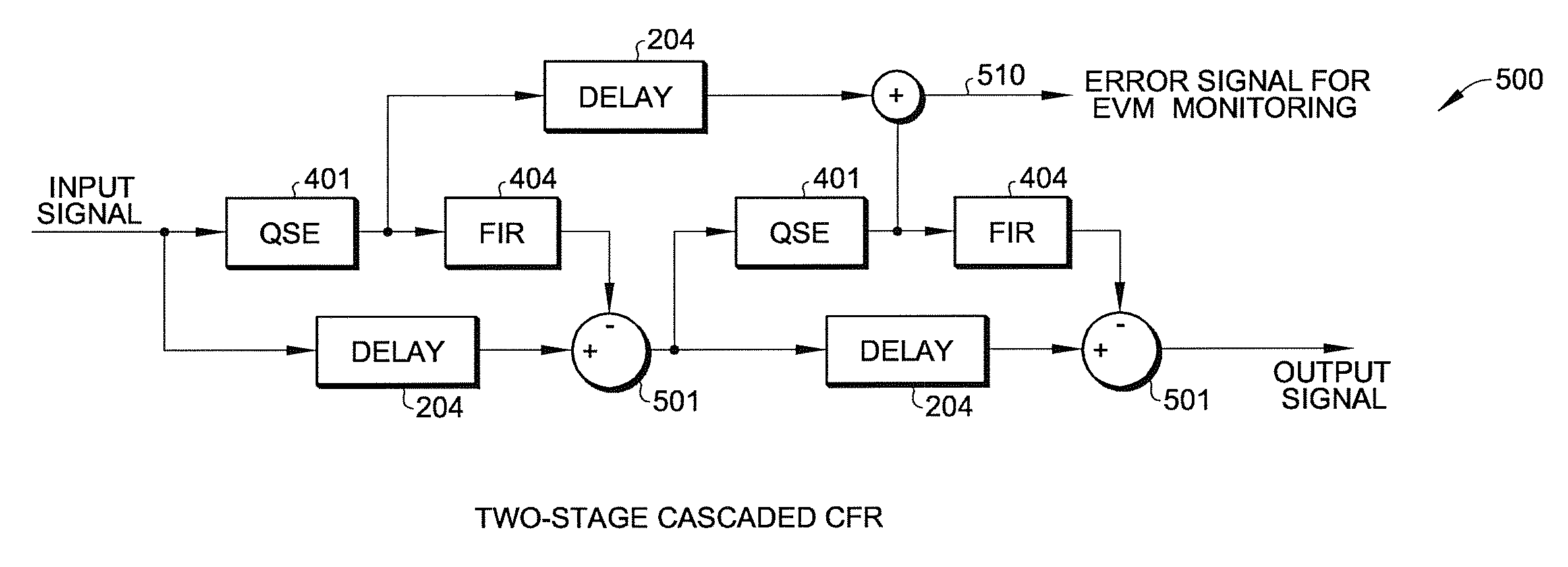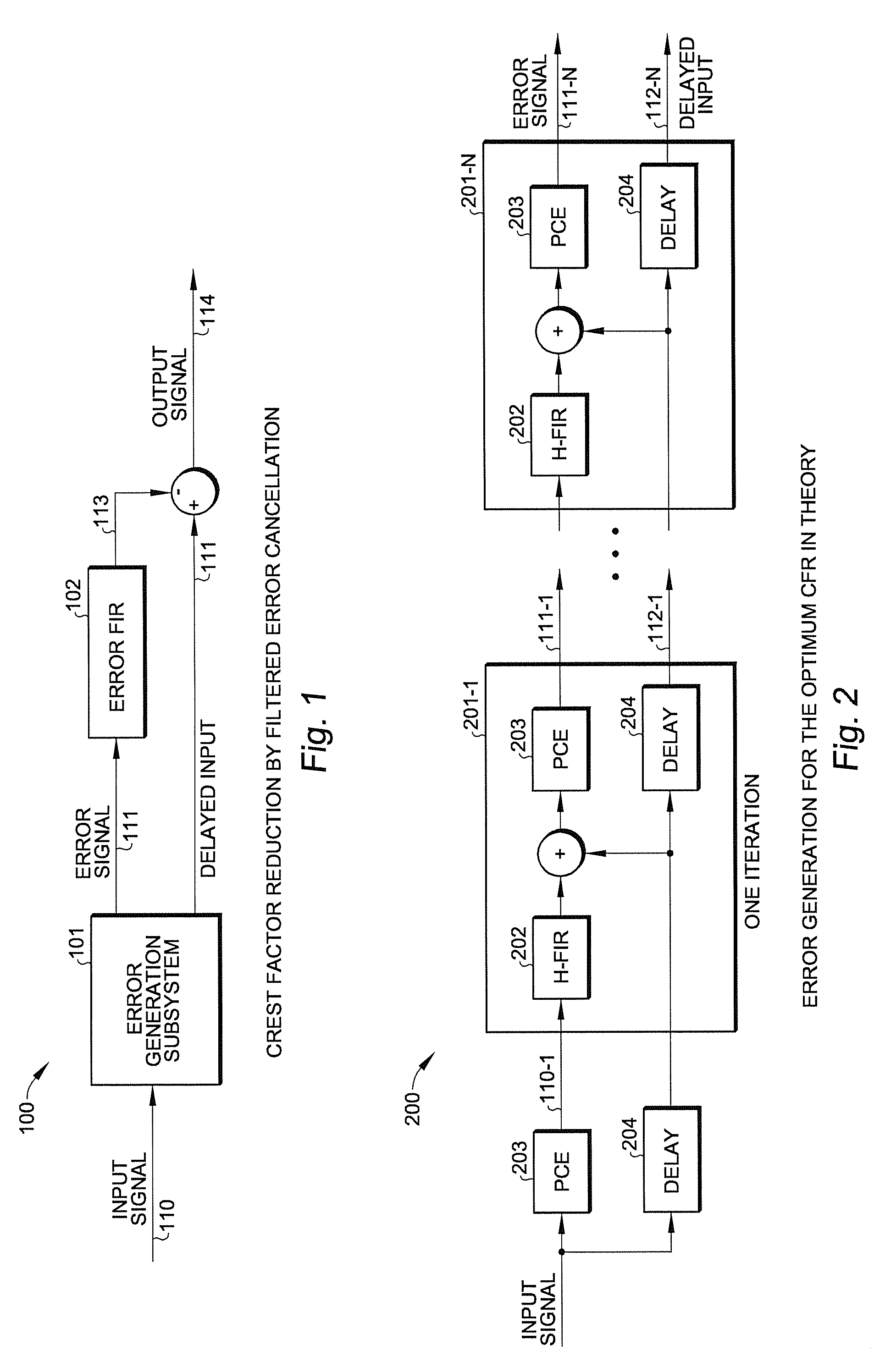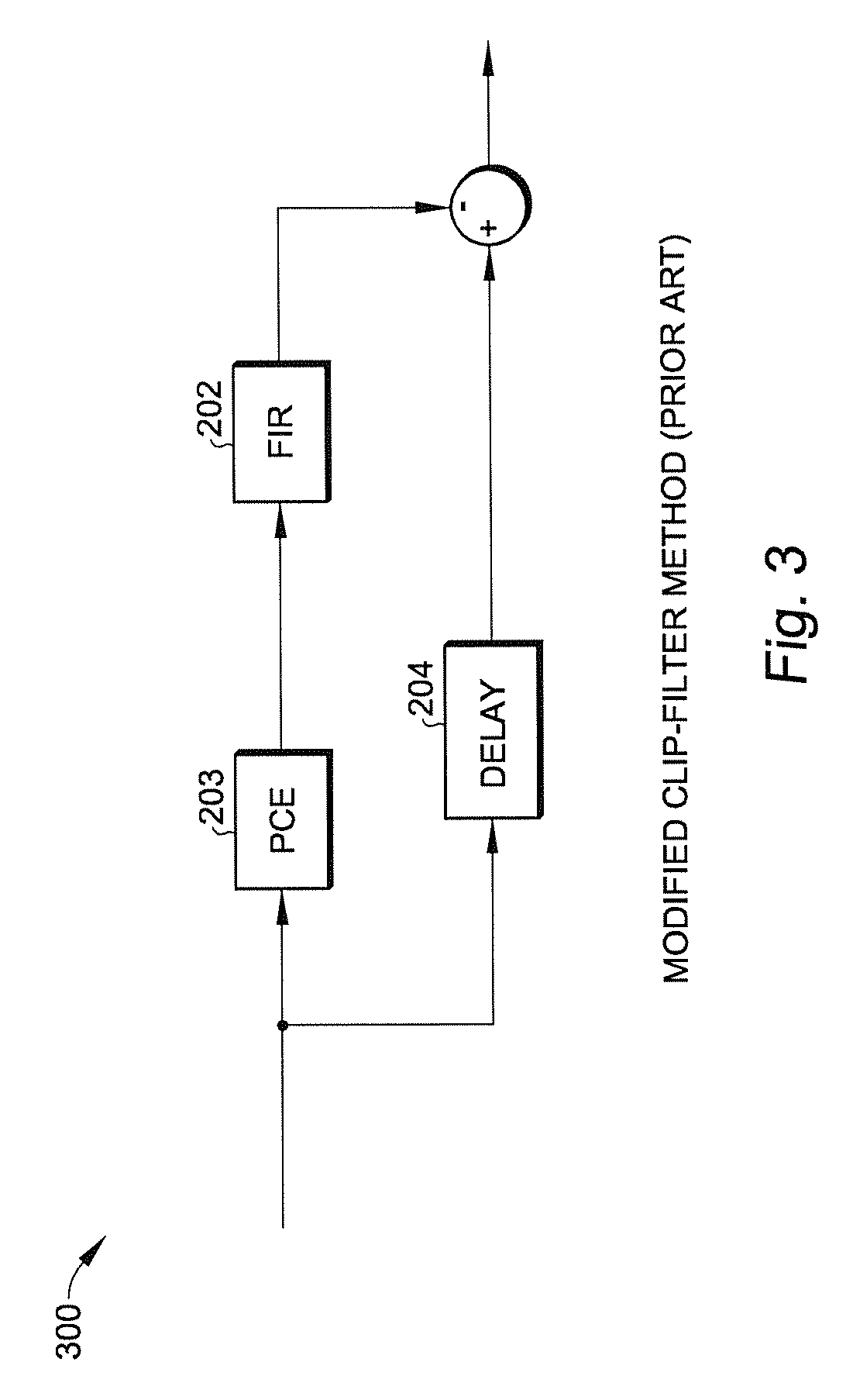Crest factor reduction for brand-limited multi-carrier signals
a multi-carrier signal and crest factor technology, applied in the field of signal processing, can solve the problems of unbalanced multi-carrier signal, poor performance of windowing method, unsuitable post-processing multi-carrier modulated signal method, etc., and achieve the effect of reducing the peak-to-average power (par) ratio of signal and increasing out-of-band emissions
- Summary
- Abstract
- Description
- Claims
- Application Information
AI Technical Summary
Benefits of technology
Problems solved by technology
Method used
Image
Examples
Embodiment Construction
[0036]According to one embodiment of the present invention, crest factor reduction (CFR) of a digitally modulated signal in complex baseband is achieved by post-processing of the input signal. The present invention is applicable, for example, to an input signal that, as seen in the frequency domain, has a signal band that is divided into a number of non-overlapping subbands or carriers, with each carrier having its own multiple-access modulation format. Such an input signal is used in, for example, WCDMA or LTE signals of 3G / 4G wireless systems.
[0037]The present invention takes advantage of a procedure that solves for an optimum CFR using a constraint-optimization approach. In this approach, the CFR-induced distortion is measured using a weighted mean square error (MSE) adapted for use with arbitrary multi-carrier signals. The optimum CFR may result from a procedure that either minimizes the crest factor, subject to a constraint on the weighted MSE, or minimizes the weighted MSE sub...
PUM
 Login to View More
Login to View More Abstract
Description
Claims
Application Information
 Login to View More
Login to View More - R&D
- Intellectual Property
- Life Sciences
- Materials
- Tech Scout
- Unparalleled Data Quality
- Higher Quality Content
- 60% Fewer Hallucinations
Browse by: Latest US Patents, China's latest patents, Technical Efficacy Thesaurus, Application Domain, Technology Topic, Popular Technical Reports.
© 2025 PatSnap. All rights reserved.Legal|Privacy policy|Modern Slavery Act Transparency Statement|Sitemap|About US| Contact US: help@patsnap.com



